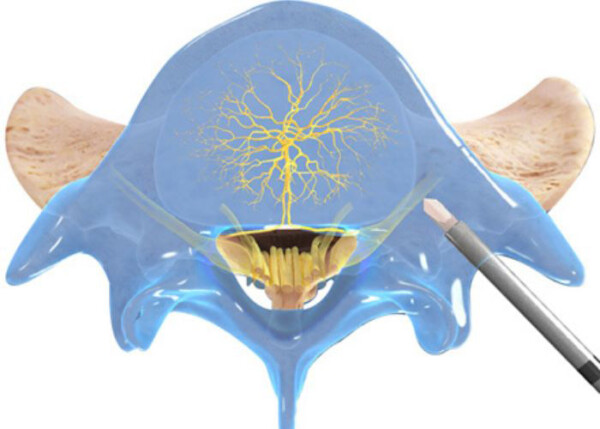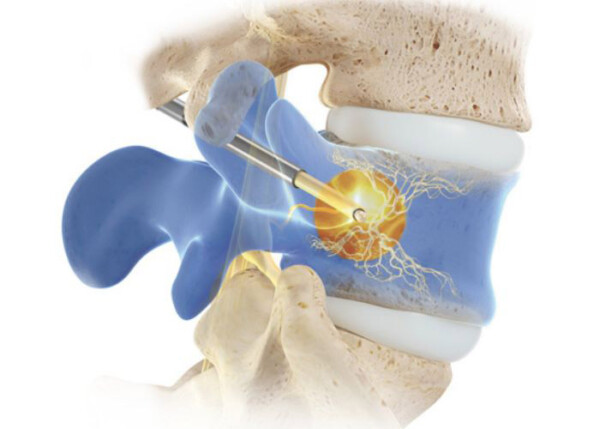What is the Intracept Procedure?
Vertebrogenic pain is a specific and distinct type of chronic low back pain caused by damage to the vertebral endplates (the transition region where a vertebral body and intervertebral disc interface with each other). The Intracept Procedure is a minimally invasive out-patient procedure designed for patients experiencing vertebrogenic pain. The procedure targets a specific nerve within the vertebra called the basivertebral nerve. The Intracept procedure has been shown to improve patient function and relieve pain long-term. There is no implant required, which offers greater treatment options for other spinal conditions.

How is the Intracept Procedure done?
The Intracept procedure is done in 4 steps:
- 1: Access the Pedicle. Under fluoroscopic guidance, the Intracept® Introducer Cannula Assembly is advanced through the pedicle. (The pedicule is located between the transverse process and the spinous process)
- 2: Create the Channel. The Intracept® Curved Cannula Assembly is used to create a channel to the trunk of the basivertebral nerve.
- 3: Place the RF Probe. The Intracept® RF Probe is inserted into the curved path and placed at the trunk of the basivertebral nerve.
- 4: Ablate the BVN. The Intracept® RF Generator is used to deliver radiofrequency energy that ablates the basivertebral nerve. (An ablation kills the nerve.)

What is the Intracept Procedure used for?
The Intracept procedure is used for chronic low back pain. The ablation of the nerve prevents the nerve from signaling pain to the brain.
How long does the Intracept procedure last?
Studies have shown the Intracept Procedure to provide long-term improvements in pain and function, sustained more than 5 years. Further, studies show:
- Sustained decrease in patients using opioids and injections long-term.
- Nearly 80% of patients indicated they would have the procedure again for the same condition.
- Less than 0.3% rate of serious Intracept Procedure-related complications reported.